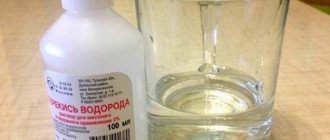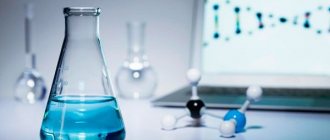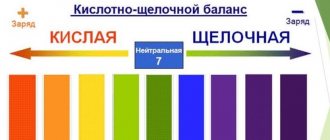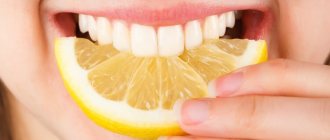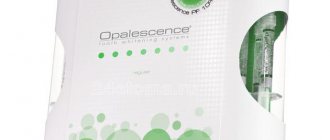Any housewife wants to achieve impeccable whiteness of clothes at home. The ability to keep tablecloths, school shirts, children's linen and kitchen towels perfectly clean is a rarity. Bleaching white clothes with hydrogen peroxide is a simple and effective way to achieve cleanliness, proven over the years.
Bleaching with hydrogen peroxide is an ancient way to achieve cleanliness.
Advantages and disadvantages of bleaching laundry with hydrogen peroxide
Benefits of bleaching white fabrics with hydrogen peroxide:
- low cost;
- removal of old plaque and yellowness;
- ease of use;
- preservation of the structure of the material;
- application for delicate fabrics;
- returning washed laundry to its original appearance;
- removing stains from deodorant, sweat and oil;
- availability of the drug.
The only downside to bleaching with hydrogen peroxide is the smell. Replace 1 tbsp. l. 3% peroxide can be 1 tablet of hydroperite. The effects of the drugs are the same.
Attention! The whitening effect is achieved by directly applying the product to the stain. The matter is saturated with oxygen, which breaks down the dirt.
Peroxide is a readily available antiseptic. The drug is sold in any pharmacy in the country. For bleaching, use a 3% peroxide solution. Usual composition concentration: 2 tbsp. l. drug per 10 liters of hot water.
We recommend reading: How to remove brilliant green from linoleum
What things can be boiled
Synthetic clothing does not tolerate high temperatures. The product label usually indicates the type of fabric and washing method. Fibers from cotton and flax are not destroyed by boiling, things do not stretch, and retain their structure. Light-colored clothing with a pattern, the label of which has a 90 °C mark, is boiled separately from other products. Linen with a rich color, regardless of the material from which it is made, is better not to boil.
Hydrogen peroxide is a colorless liquid that is an excellent solvent. You can purchase the drug at any pharmacy; the cost of one 100 ml bottle is about 15 rubles.
Features of bleaching laundry with hydrogen peroxide
White clothes look noble. But maintaining her ideal appearance for as long as possible is quite difficult. Light-colored linen quickly washes out, acquires a yellow tint and loses its shine. The use of hydrogen peroxide to remove stains from fabrics is associated with some features:
- When restoring the material, do not mix dark and light underwear to avoid shedding.
- Old yellow stains from wool and silk are removed in several stages. Clothing is placed in a mixture of peroxide diluted with water. After 30 minutes, the product is drained, the laundry is washed and dried. If dirt remains, the procedure is carried out the required number of times until the color is restored.
- Removing yellow stains from cotton and linen is carried out by directly applying a peroxide solution to the material. If the yellowness remains, the procedure is repeated until the contamination disappears.
- Bleaching is carried out only once every 3-4 washes, otherwise the strength properties of the material will be lost.
- After bleaching, clothes are rinsed in 2 stages: first at a temperature of 20-40 ° C, and then in cold water.
Each type of matter has its own recipe for restoring whiteness. Therefore, when bleaching, things are separated not only by color, but also by type of fabric: synthetics, silk and wool, or cotton and linen.
What is used
To wash and bleach things manually and not spoil them, you need to know which fabrics can be exposed to high temperatures and what you will need for this.
Boil down
Before you start boiling, you need to select a container that can hold at least a bucket of water. An enameled pan without chips, cracks and rust, galvanized boiling water, is suitable for this purpose.
Wooden tongs
In order for the laundry to boil evenly, you need to mix it and take it out not with your hands, but to specially select a device in the form of a stick, a large wooden spoon or tongs.
Detergents
To effectively boil natural fabrics, different compounds are added to the water. Most often, for this purpose, laundry soap is crushed into shavings and mixed with baking soda or soda ash. Sodium bicarbonate softens water and makes it easier to remove stains. The amount of the substance is affected by the degree of contamination of the item; usually no more than 30 g of soda is used per liter of liquid. Oxygen bleach removes yellowness. Dissolve a few tablespoons of Persol powder without chlorine in 5 liters of water and wash dirty items by putting the mixture on the fire for at least an hour.
When boiling light-colored clothes with laundry soap, several crystals of potassium permanganate are poured into the container, which give things a well-groomed appearance.
To restore the whiteness of yellowed fabric, use ammonia and hydrogen peroxide. The overalls are boiled down with the following mixture, which is prepared by combining the following in a bucket of water:
- 0.5 kg of laundry soap;
- a glass of soda ash;
- 250 g silicate glue.
Chlorine bleaches cause allergies in many people, especially children. Such detergents are used extremely carefully. Take a spoon or one and a half of the substance per liter of water.
How to bleach clothes with hydrogen peroxide
With repeated washings, the white item turns gray and dull. To restore the color saturation of the laundry, prepare a composition at the rate of ¼ cup of hydrogen peroxide per 5 liters of water at a temperature of up to 40 ° C. The laundry is left in the resulting mixture for 3 hours, then rinsed with the addition of vinegar or balm for delicate natural fabrics.
It is recommended to use a 3% peroxide solution when bleaching fabrics in the following ways:
- to get rid of old yellow stains, white clothes are soaked in the mixture for 1-2 hours;
- to avoid gray deposits on bedding, add 1/2 cup of hydrogen peroxide to the automatic machine when washing clothes;
- to restore the original color, white items are soaked in the solution for 1-3 hours;
- To whiten clothes from tea, coffee, wine, fruit, juice and blood, the composition is applied directly to the stain.
We recommend reading: The benefits of white wine and how to make it at home
How to bleach wool laundry with hydrogen peroxide
Stains on white clothes made from fabrics containing wool or silk are removed by hand washing. A solution to remove stains with hydrogen peroxide prepared from the following ingredients:
- 200 g table salt;
- 25 g of detergent for delicate fabrics;
- 10 liters of water at a temperature of up to 30 °C;
- 700 ml 3% peroxide.
Delicate items made of wool and silk are washed by hand at a temperature of 25-35 oC
Place white clothes in the prepared mixture for 3-5 hours. Then carefully remove the item using pressing movements. The product is not pulled out, but everything is taken out at once, pressing with both hands. Draw warm water up to 35 ° C and rinse the laundry well with conditioner for delicate fabrics. The washed clothes are carefully laid out on a horizontal surface covered with a terry towel.
Washing a down scarf:
To restore the whiteness of down products, add 2 tbsp to 10 liters of water at a temperature of 30-35 °C. l. peroxide and place a shawl or scarf in the resulting mixture for 20 minutes. After washing, the product is rinsed with the addition of vinegar and hair conditioner.
How to bleach synthetic items using hydrogen peroxide
White underwear made of thin synthetic material wears out and loses color over time. Bleaching bras and panties with hydrogen peroxide. To do this, soak underwear in the following composition:
- 10 liters of water at a temperature of 20-30 ° C are taken into the basin;
- diluted with 3 tbsp. 3% hydrogen peroxide stirring;
- soak white underwear in the prepared product for 1 hour;
- The laundry is placed in an automatic machine, washed in the usual way, rinsed with the additional rinse function and dried.
Advice! To bleach polyester lace underwear, use only granular powder or a product for delicate white fabrics.
Soaking white synthetic items in a prepared peroxide solution for 30 minutes before the main wash will remove the smell of sweat from your laundry.
How to bleach white linen and cotton items with hydrogen peroxide
White linen and cotton items are bleached with a 3% peroxide solution, placing it directly into the powder compartment of the automatic machine during washing. 15 ml of peroxide is added to the cell at a water temperature of 65 °C.
To bleach a T-shirt and knitwear, hydrogen peroxide is poured into a plastic basin or bucket with 2 liters of water at a temperature of 40-65 ° C and 1 tsp is added. peroxide. White T-shirts are placed in the resulting composition for 20 minutes. After this, the clothes are rinsed and dried.
If white knitted clothing has yellow spots, add 1 tsp to the resulting product. soda This will give the product a lost whiteness.
How to whiten white socks with hydrogen peroxide:
Method number 6: “Whiteness”
If your white things have acquired a yellowish tint, then they are giving you a sign that it is time to use “Whiteness”. This product is suitable for lightening dense fabrics, but for thin tulle or delicate linen this bleach is dangerous. Let's learn to use Whiteness.
- Heat the water to a temperature of + 35 C.
- Pour 15 ml of “Belizna” into heated water.
- Add 20 g of washing powder.
- Immerse the laundry in the prepared solution and let it sit for 15 minutes.
That’s it, the laundry can be washed in a stylish machine in the “Fast 30” or “Rinse” mode. And another good folk remedy for whitening things involves boiling: add 15-20 ml of “Whiteness” and 20 g of washing powder to 4 liters of clean water, boil the laundry for 25 minutes. After boiling, the laundry is rinsed in plenty of clean water.
How to enhance the effect of fabric bleaching with hydrogen peroxide
A hydrogen peroxide solution removes stains on cuffs and collars and restores the appearance of gray, worn clothes. The following drugs help enhance the bleaching effect of white fabrics:
- ammonia;
- soda ash;
- lemon juice or acid;
- laundry soap.
This composition is used only for washing white items. It is impossible to remove stains on colored fabrics with this product, since the combination of peroxide with other substances can lead to discoloration of the material.
Peroxide and ammonia for whitening
Ammonia will help get rid of gray plaque and yellowness on white fabrics and enhance the whitening effect. For this we recommend:
- Dilute 1 tbsp in 5 liters of water at a temperature of up to 40 °C. l. peroxide and 1 tbsp. l. ammonia.
- Dip white clothes into the resulting solution and leave to soak for 30-50 minutes.
- After the time has passed, snow-white items are rinsed twice and washed daily.
Whitening tulle with hydrogen peroxide is carried out with a composition of:
- 10 liters of water, temperature 40-65 oC;
- 2 tbsp. l. 3% peroxide;
- 1 tbsp. l. ammonia.
The tulle is placed in the resulting mixture, soaked for 5-10 minutes, and rinsed thoroughly with warm and cold water.
A solution of hydrogen peroxide and ammonia with water helps restore lost whiteness to things
To bleach a blouse or shirt, dilute 1 tbsp in 10 liters of water at a temperature of 40-70 °C. l. ammonia and 2 tbsp. l. 3% hydrogen peroxide solution. The laundry is dipped into the resulting composition for 20-30 minutes and rinsed thoroughly.
To ensure that cuffs and collars are washed perfectly, they are first rubbed with laundry soap. This enhances the whitening effect.
Hydrogen peroxide and baking soda for whitening clothes
A mixture of hydrogen peroxide and soda has an effect comparable in quality to professional bleach. To restore the whiteness of collars and cuffs, prepare a paste of 10 ml of peroxide and 1 tsp. soda The resulting composition is applied to the contaminated areas with a brush and left for 5-15 minutes. Then wash in an automatic machine with an additional rinse function.
We recommend reading: Baking soda: beneficial properties, uses, how to take
A paste made from hydrogen peroxide and baking soda whitens shirt cuffs and collars.
When bleaching children's whites and kitchen towels with a mixture of hydrogen peroxide and soda, excellent results are obtained. This mixture has proven itself well among housewives. Add 1 tsp to 2 liters of water at a temperature of 30 °C. peroxide and 1 tbsp. l. soda ash. White items are placed in the mixture for 10 minutes and washed as usual.
Cotton and linen white kitchen towels can be bleached using soda ash and peroxide, which are poured into the laundry detergent compartment. At a temperature of 60-70 oC, laundry is washed as usual. It is not recommended to use additional stain removers with this method.
Attention! Use baking soda and peroxide bleach only on cotton and linen fabrics. Before using the paste on things, the product is tested in an inconspicuous place of the product so as not to burn the material.
School white shirts cause a lot of trouble for housewives. Stubborn stains from sweat and deodorants, greasy food marks, marks from a ballpoint pen - all this must be removed from the child’s clothes. The following solution will help to bleach a blouse with hydrogen peroxide from sweat and yellow stains:
- 4 liters of water at a temperature of 40-70 ° C;
- 2 tbsp. l. soda ash;
- 2 tsp. peroxide.
A shirt or blouse is dipped into the resulting composition for 15 minutes. After the time has passed, the items are thoroughly rinsed and dried.
Stages of whitening a blouse using a solution of water, hydrogen peroxide and soda
Whitening with hydrogen peroxide and citric acid
A solution of lemon juice or acid and hydrogen peroxide can even cope with stains from fuel oil and diesel fuel on white things. To prepare the composition you will need:
- 2 liters of warm water;
- 1 tsp. peroxide;
- 1 tsp. citric acid.
White clothes with stains are soaked in the resulting mixture for 10-15 minutes, rinsed well and washed.
Synthetic fibers react well to citric acid, which helps to delicately deal with stains on white items. For this:
- Water at a temperature of up to 40 °C is filled into the basin.
- Add 1 tsp. hydrogen peroxide.
- Squeeze juice from ½ part lemon.
- Mix the composition thoroughly.
- Place clothes made of synthetic fabric for 20-30 minutes.
- Rinse things thoroughly, first at temperatures up to 40 ° C, and then in cold water.
The composition of citric acid and hydrogen peroxide gently whitens synthetic fabrics
The resulting solution eliminates yellowness on white blouses. To do this, apply the mixture to the areas of contamination with a sponge and leave for 30 minutes. If necessary, wash the entire item with this mixture.
Light jeans always have a problem bleaching. A composition of citric acid and hydrogen peroxide will cope with stains on things. To do this, mix 1 liter of water with 1 tsp. citric acid and 1 tbsp. l. hydrogen peroxide. White jeans are soaked for 20-30 minutes. Wash with the extra rinse function.
If desired, this product is applied from a spray bottle to the legs of colored jeans to lighten some areas.
To achieve a snow-white effect on synthetic fabrics, use the following composition:
- 5 liters of warm water;
- 1 tbsp. l. washing powder for delicate fabrics;
- 4 tbsp. l. table salt;
- 1 tbsp. l. hydrogen peroxide;
- 1 tbsp. l. ammonia.
Mix the ingredients well. White items made from synthetic fibers are immersed in the resulting solution for 2 hours. Rinse thoroughly 2 or more times.
Why is boiling necessary?
In hot water, the temperature of which is 100 °C, traces of chocolate, juice, milk and cottage cheese, pumpkin or carrot puree are washed off, and light-colored clothes are washed well. Mothers who care about their baby’s health resort to boiling laundry to:
- Protect your child from infection.
- Return yellowed items to their snow-white hue.
- Destroy germs, dust mites.
The ancient method of washing clothes is time consuming but environmentally friendly and is used for bleaching.
Although some automatic machines have a boiling function, water in this mode does not heat up to 100 ° C, so not all pathogenic microorganisms die.
Precautions when bleaching clothes with hydrogen peroxide
When removing hydrogen peroxide stains on white things without protective equipment, you can get burned.
Burn on hand from hydrogen peroxide
There are precautions that must be followed:
- A paste of baking soda and hydrogen peroxide is applied to a white cloth for 10-15 minutes.
- Delicate items are soaked in warm water at a temperature of no more than 40 °C.
- Industrial bleaches are not added to hydrogen peroxide solutions. Combined use results in an undesirable chemical reaction, which may cause things to deteriorate or cause a fire.
- Rust stains on white clothes cannot be removed with peroxide.
- It is recommended to wear rubber gloves when mixing compounds to avoid getting burned.
- If the solution comes into contact with the eyes or mouth, a burn to the mucous membrane may occur. The affected areas are thoroughly washed with plenty of running water. If blisters begin to appear, immediately consult a doctor for qualified help.
- At home, it is not recommended to use a hydrogen peroxide solution of more than 3%.
- It is necessary to work with peroxide only in ventilated areas to avoid poisoning.
- In order not to spoil the clothes, first test the product on a piece of cloth or in an inconspicuous area.
Attention! Items should be completely immersed in the hydrogen peroxide solution. To avoid product color differences after surgery.
Possibility of combination with other means
In addition to soda and hydrogen peroxide, other means are used to whiten things, which can be safely combined with the first two:
- table salt (suitable for synthetic fabrics, wool and silk);
- ammonia (cotton, linen, wool, silk, delicate fabrics);
- potassium permanganate (suitable for all types of fabric);
- mustard (suitable for all types of fabric).
You cannot add any professional bleaches (alkaline, chlorine, oxygen) to soda or hydrogen peroxide in order to enhance the effect of the former. This can lead to unforeseen consequences, such as yellowing or deterioration of the fabric.
General information
Do not confuse hydrogen peroxide solution with regular hydrogen peroxide, which can be harmful. 3% hydrogen peroxide should never be taken. Can be diluted in water.
Many sources talk about the benefits and positive aspects after taking it, while keeping silent about possible risks and dangers.
Hydrogen peroxide exists in 2 forms - liquid and tablet form.
- Perhydrol (3% peroxide in liquid form);
- Hydroperite (35% peroxide in tablet form).
1 tablet contains 1 tbsp. l. liquid solution.
Due to its liquid form, perhydryl is widespread and easy to use in medicine. Hydroperite is usually used independently at home.
Adviсe
Helpful information:
- When you begin the process of removing wine stains, you need to take precautions, such as protecting your hands with gloves.
- When removing a wine stain, work from the center of the stain outward.
- Before attempting to remove a stain with a new cleaner, test it on a small area of fabric.
- If you are using an odorous substance, such as ammonia, make sure the area is well ventilated and place a mask over your mouth and nose.
Cleaning medical gold
Medical gold is an alloy of brass, silver, copper, titanium and zinc, but there may be no gold in it at all: the alloy already has a noble “golden” luster. Products made from medical gold are durable, not subject to external mechanical influences, and due to the special technology of polishing and sputtering, they practically do not darken, do not lose shine, and do not change color.
- If it is necessary to clean such jewelry from contamination, the following methods are used:
- Rinse in a solution (2 drops of shampoo or liquid soap per 0.5 cup of water) and clean the product with a soft brush.
- To remove dust, wipe the product with a cotton swab soaked in beer; there is no need to rinse with water after this.
- Wipe the decoration with table vinegar, and then be sure to rinse in running water.
What not to do when removing a wine stain
To avoid making the problem worse, it is important to understand what not to do.
- When washing, try to wash from the edges to the center. Otherwise, the stain will “hiss.”
- Please note that strong detergents should not be used on wool and natural furs. Choose a gentle solution
- When treating a stained area, you must ensure that there are no streaks left around the stain. To prevent this, you must first wet the area around the stain with clean water.
If you follow proper cleaning procedures, the results can be impressive. Don't rush to throw away your stained sweatshirt. No matter how difficult the stain is, there is always a way to get rid of it.
Why does plastic turn yellow?
Plastic can turn yellow due to improper care, sudden temperature changes and low-quality additives in the polymer, and fade in the sun. Let's look at the five main reasons why plastic turns yellow.
Burns out in the sun
Ultraviolet radiation destroys the polymer compounds of plastic. To avoid yellowing, light stabilizers and benzophenol are added to plastic during production, which block the penetration of sunlight into the plastic and color change.
Temperature changes
With sudden temperature changes, the plastic is deformed and microcracks appear in it, into which air begins to flow. This leads to slow oxidation of the top layer of plastic and yellowing.
Improper care
The surface layer of plastic can be destroyed by acids, alkalis, aggressive cleaning agents and hard brushes. At the same time, microcracks form on the surface of the polymer, into which dirt gets trapped, changing the color of the material.
Dust, grease and soot
If there is no hood in the kitchen or it cannot cope with the outflow of air, and people smoke at home, this leads to soot, dust, grease and nicotine deposits settling on plastic items. They penetrate the surface layer of the plastic and change its color. First of all, plastic windows in the kitchen turn yellow.
Poor quality material
Violating plastic production technology, using recycled materials or saving on color additives worsens the surface and protective layer of the material. This leads to the rapid appearance of yellow spots on the surface.
Household chemicals
If folk remedies do not help, then ready-made industrial products for removing stains will come to the rescue.
Stain remover, bleach and washing powder
The first method that should be used for damaged light-colored clothing is repeated washing with powder with a bleaching effect.
If this method does not help, then you need to use more concentrated drugs that exist on the market today:
- oxygen bleaches. The most popular among them are Vanish or Lion. They can be used for both white and colored fabrics. First, the fabric should be soaked in water for 5-10 hours with the addition of bleach in the dosage specified by the manufacturer. Then, wash with powder and the same bleach;
- chlorine-containing bleaches - Ace, “Whiteness”. Suitable for use only on white fabrics with a natural composition. The item must be soaked for one hour and washed at a temperature of at least 70 degrees with the addition of powder and chlorine bleach;
- stain removers. For example, Antipyatin. It must be applied pointwise to the paint and allowed to sit according to the instructions. Then wash the item in the usual way.
Get rid of bad breath.
Can't get rid of bad breath even after brushing your teeth? An excellent alternative for mouth rinsing is hydrogen peroxide. Since hydrogen peroxide kills bacteria that cause bad breath, all it takes is rinsing your mouth for 30 seconds. You'll be surprised how effective this is. But again, don't overdo it, and use a peroxide rinse once a week, as peroxide kills the good bacteria in your mouth too.
First emergency aid immediately after water procedures
The easiest way to get rid of paint stains is to follow fresh traces, since it has not yet fixed itself in the fibers. Emergency methods must be used immediately after washing, while the fabric is still damp:
- Rinse the item or try to wash away local contamination in cool water. Hot water can set the paint, so it is not advisable to use it.
- Grate the laundry soap and dissolve it completely in warm water.
- Add equal parts of potato starch and salt to the soap solution. For use on light-colored items, you can add a few tablespoons of citric acid.
- Apply a generous layer of the prepared gruel onto a damp cloth and leave to act for 10-12 hours.
- Shake off the remaining dried mixture, wash the clothes and rinse them well.
Dishwashing liquid will also help get rid of paint stains. A few drops should be dissolved in warm water and the damaged clothing should be soaked for several hours. Wash stains and rinse.
How to remove a fresh stain at home?
The sooner you start cleaning, the better. It will be easier to remove, since the paints will not have time to penetrate into the fibers of the fabric and become fixed in them.
The procedure for treating fresh stains is as follows:
- If it cannot be removed and washed immediately, you can use regular paper towels. Wet it with cold water and wipe away the drink stain. Wet stains can be easily removed with ordinary soapy water.
- To enhance the effect, you can also apply regular table salt to the wine stain. This will absorb the water along with the coloring pigments. After absorption, the old layer of salt is shaken off and a new layer of salt is applied to the stain.
- If there is vodka on the table, place it on cotton wool or a napkin and gently blot the red wine stain. Alcohol is great for neutralizing color pigments.
